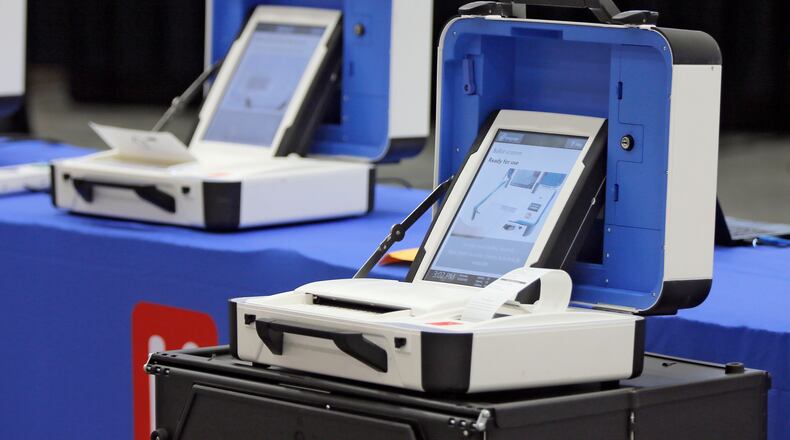Georgia lawmakers are considering a bill to replace the state’s 17-year-old electronic voting machines with a system that combines touchscreens and computer-printed paper ballots.
Here’s how that system would work and what cybersecurity and elections experts say.
1. VOTE
Credit: Bob Andres
Credit: Bob Andres
Voters tap a touchscreen to make their selections, similar to the state’s current voting machines.
2. PRINT AND REVIEW
Credit: Bob Andres
Credit: Bob Andres
The touchscreen is attached to a printer that spits out a paper ballot for voters to review their choices.
3. SCAN AND TABULATION
Credit: Steve Schaefer
Credit: Steve Schaefer
Voters insert their paper ballots into optical scanning machines for tabulation.
SECURITY CONCERNS
Credit: HANDOUT
Credit: HANDOUT
Cybersecurity experts and election integrity groups oppose the touchscreen-and-paper voting system, called ballot-marking devices. They say ballot-marking devices could be hacked to alter election results. Unlike ballots bubbled in with a pen, ballot-marking devices print text of voters’ choices and encode those choices into bar codes for machine tabulation. Critics of ballot-marking devices say voters wouldn’t be able to tell if the bar codes matched their printed choices.
BALLOT ACCURACY
Credit: Robert Cauvel
Credit: Robert Cauvel
Georgia election officials support ballot-marking devices, saying the touchscreens are easy to use and create a paper ballot that could be used to check election results. Backers of ballot-marking devices say computer-printed ballots avoid the problems of hand-marked paper ballots, which could be invalidated by stray pen marks or human errors. Ballot-marking devices also include accessibility options to accommodate disabled voters, such as adjustable type size.
Keep Reading
The Latest
Featured








